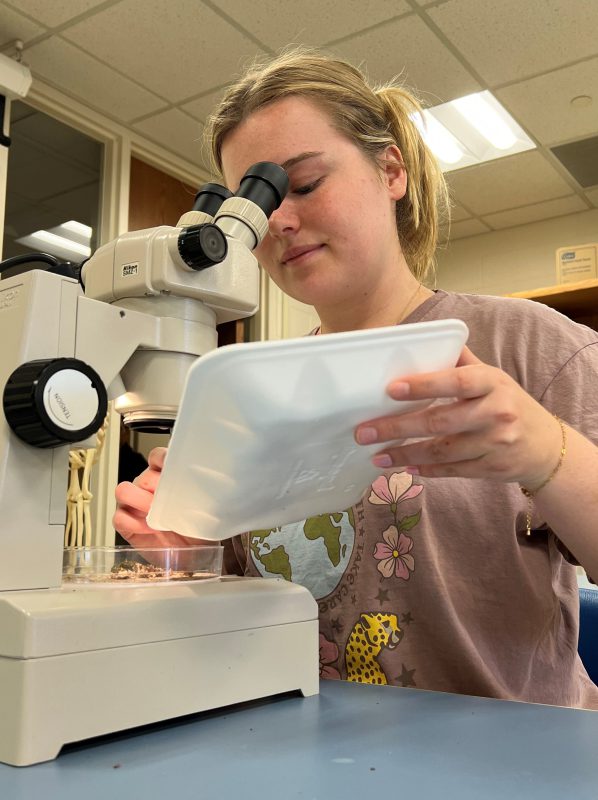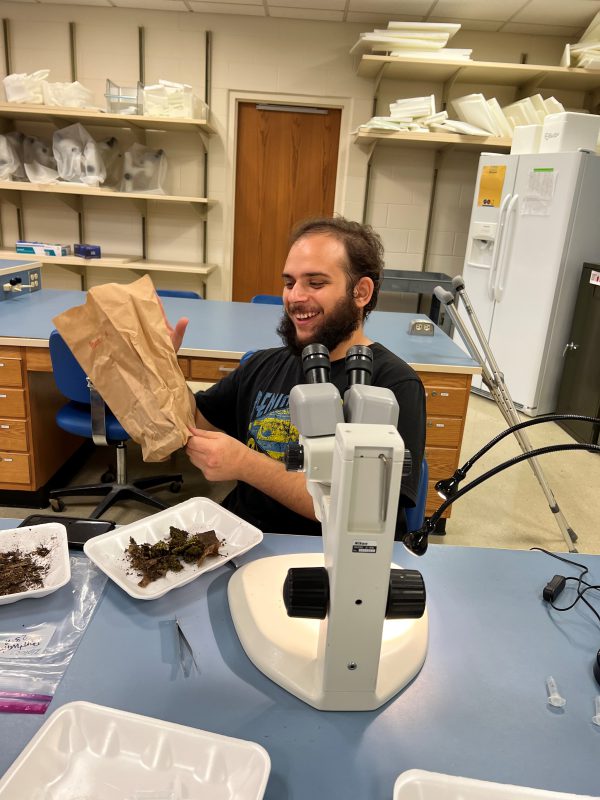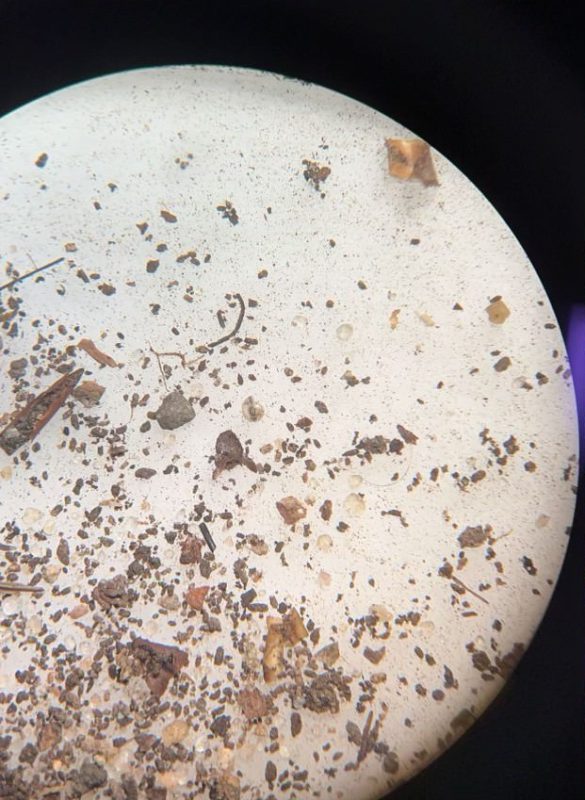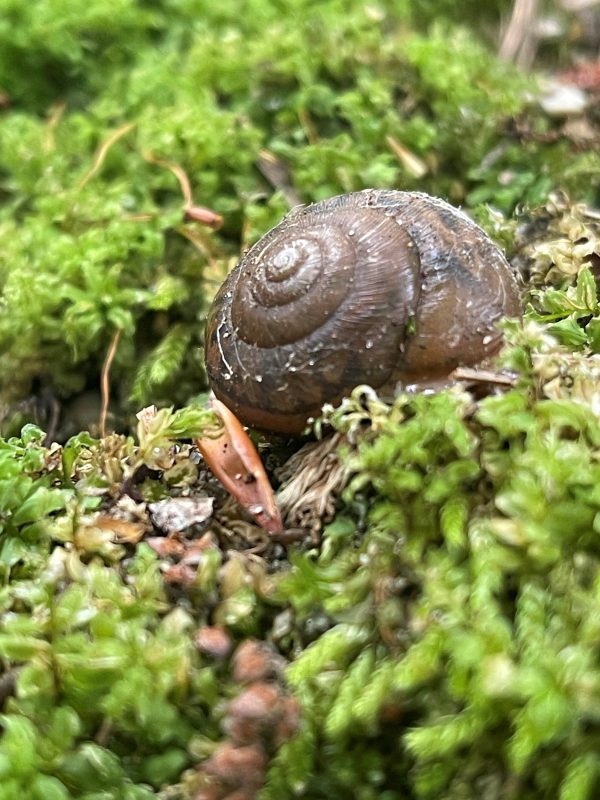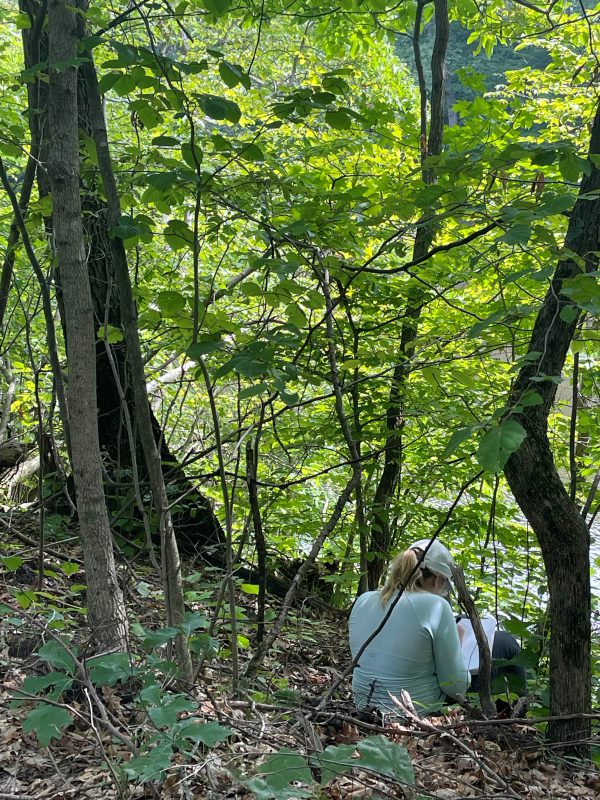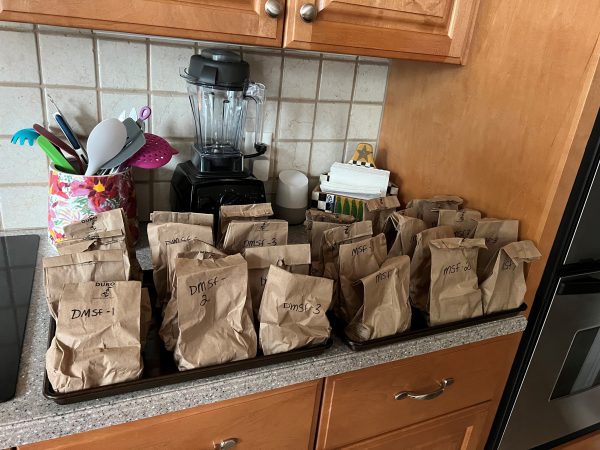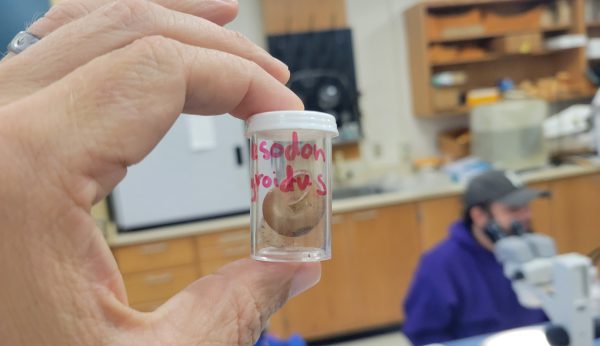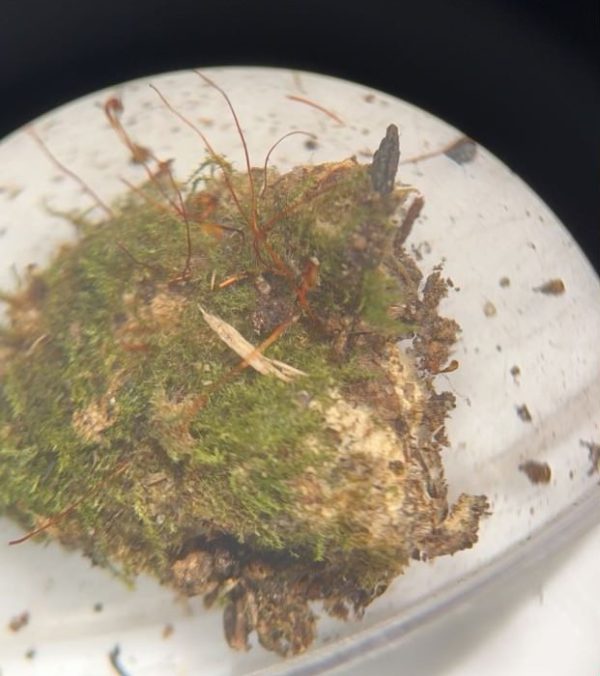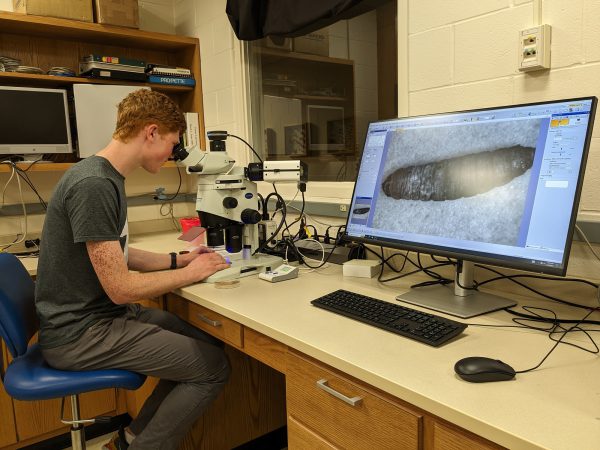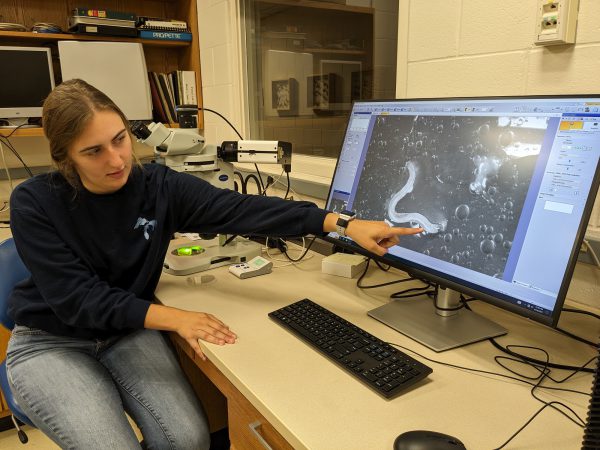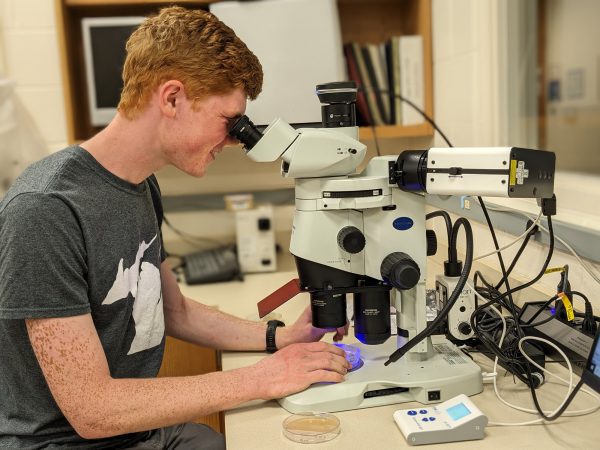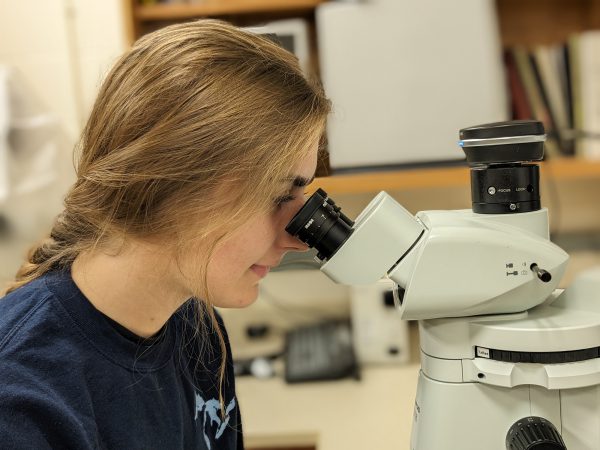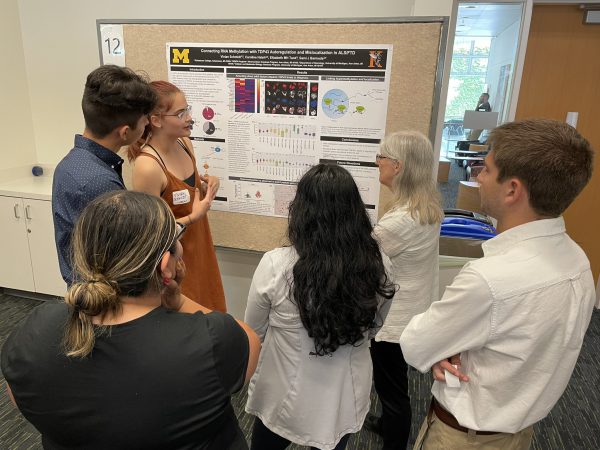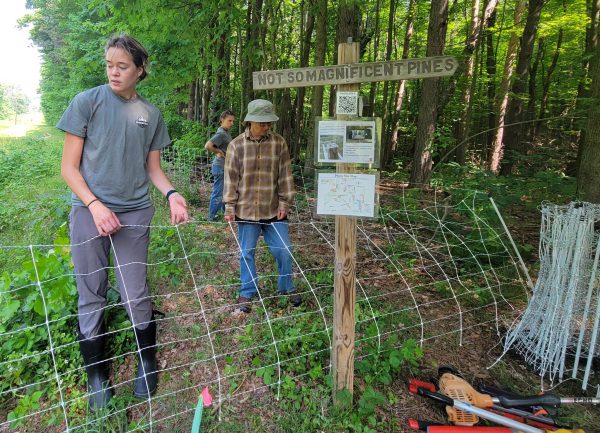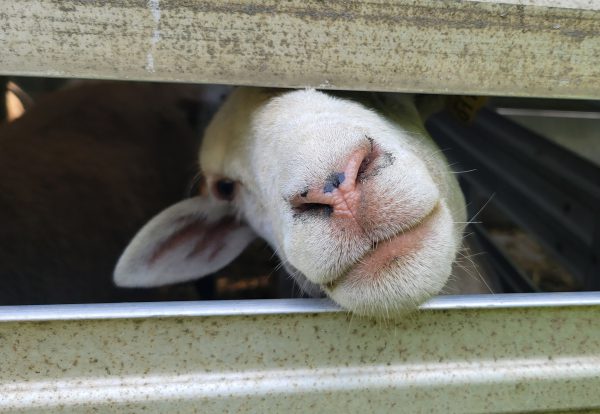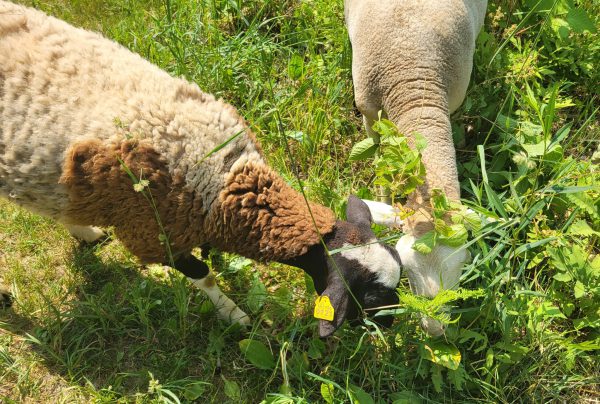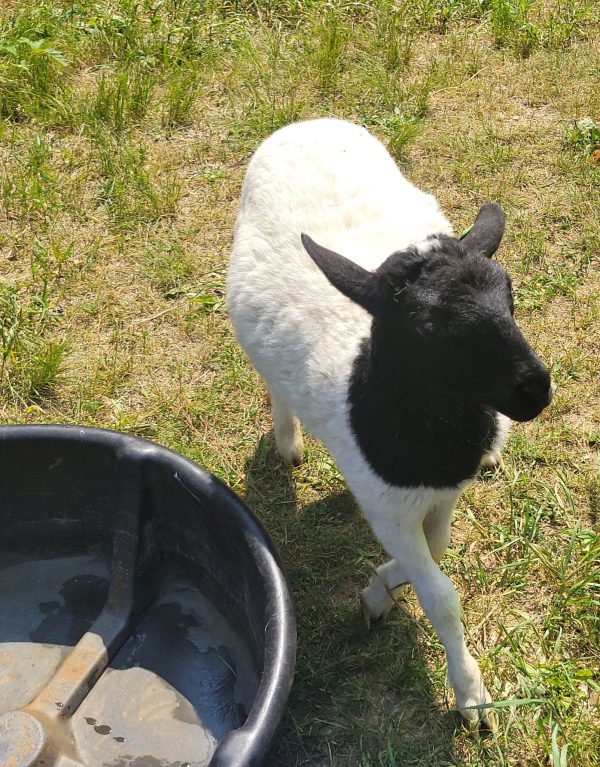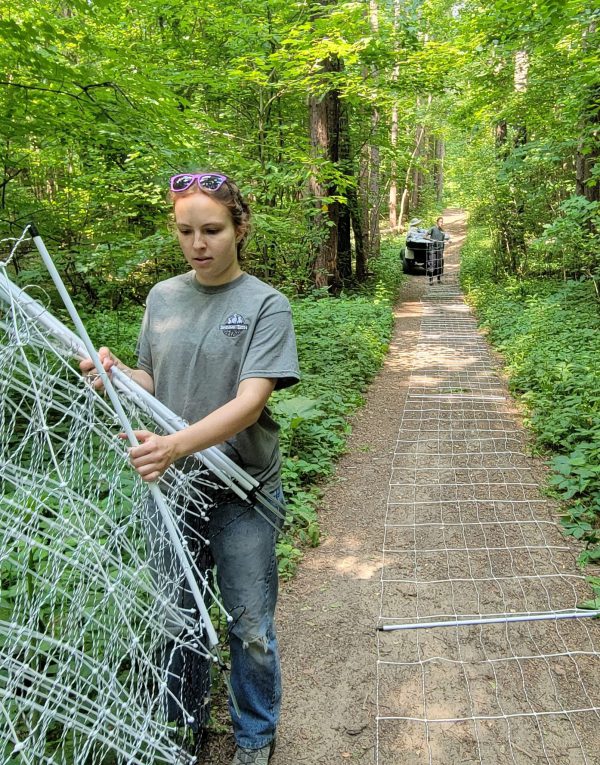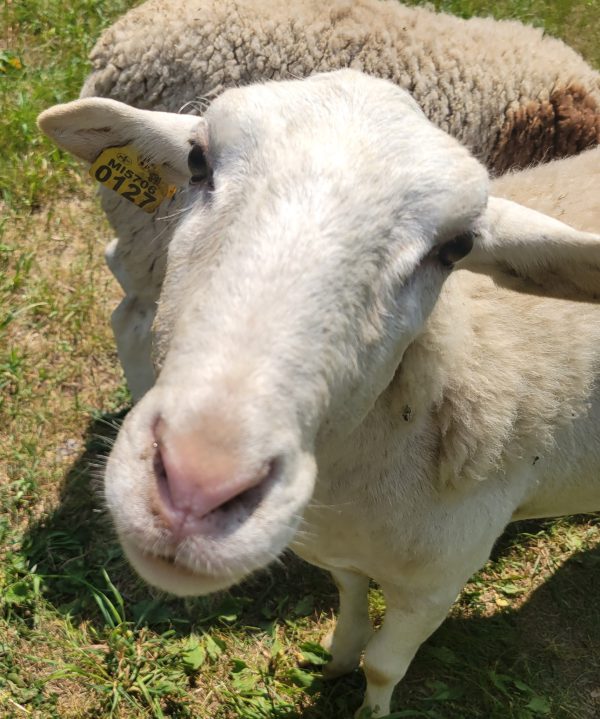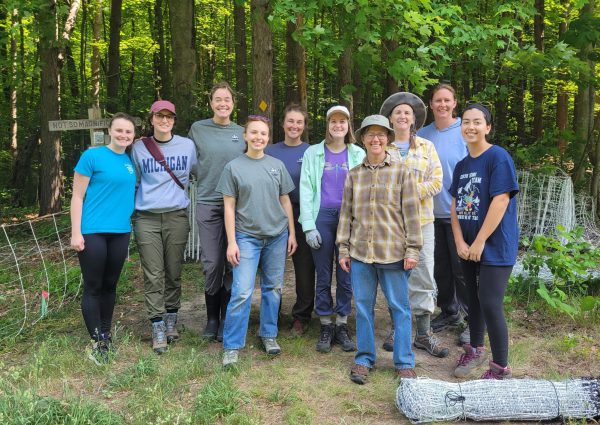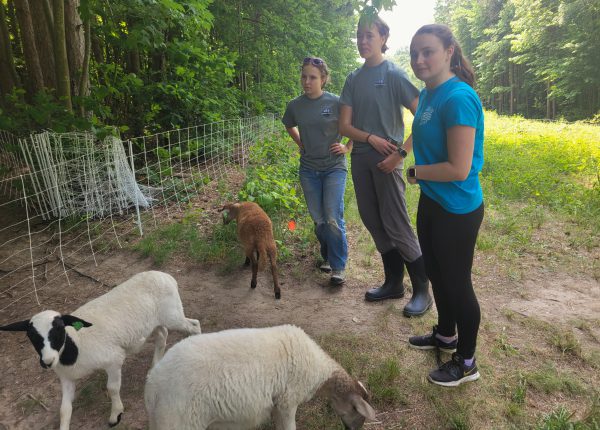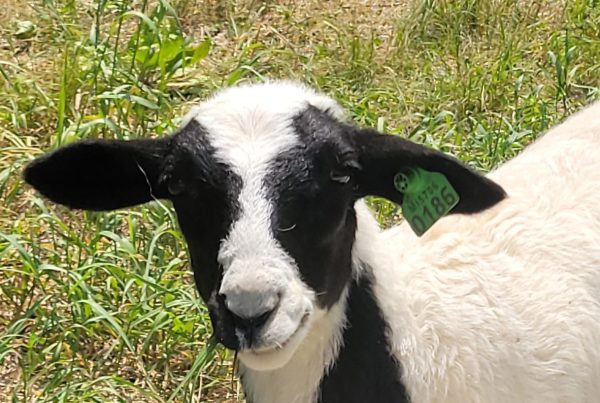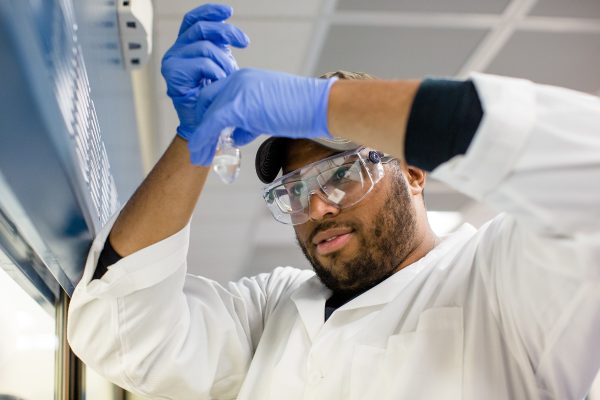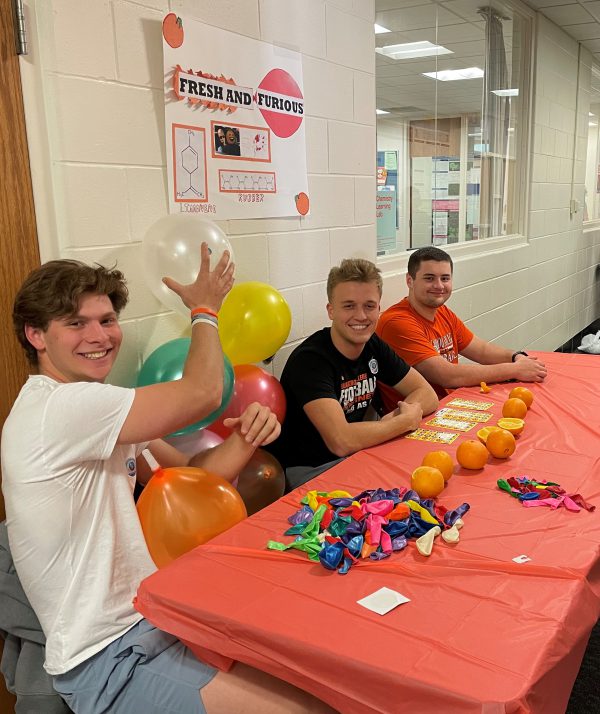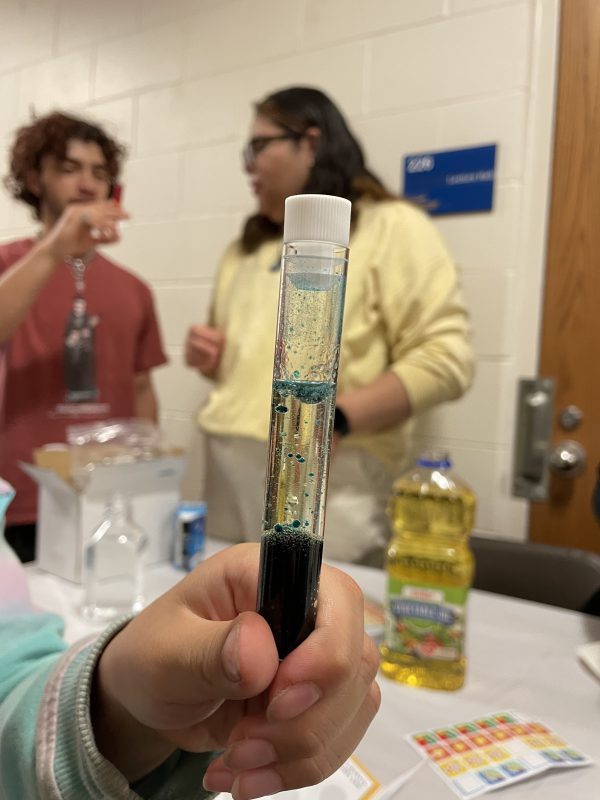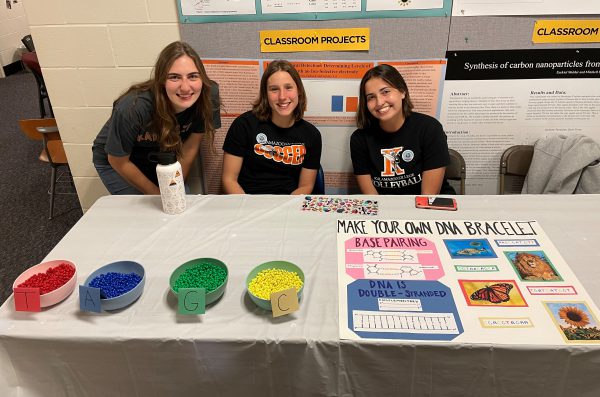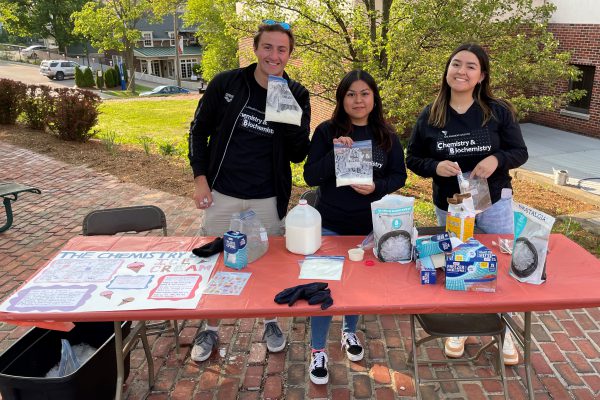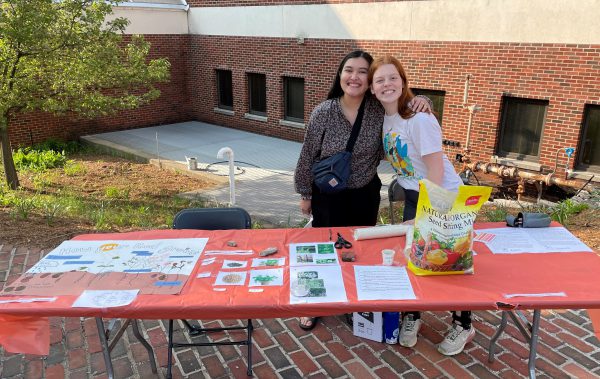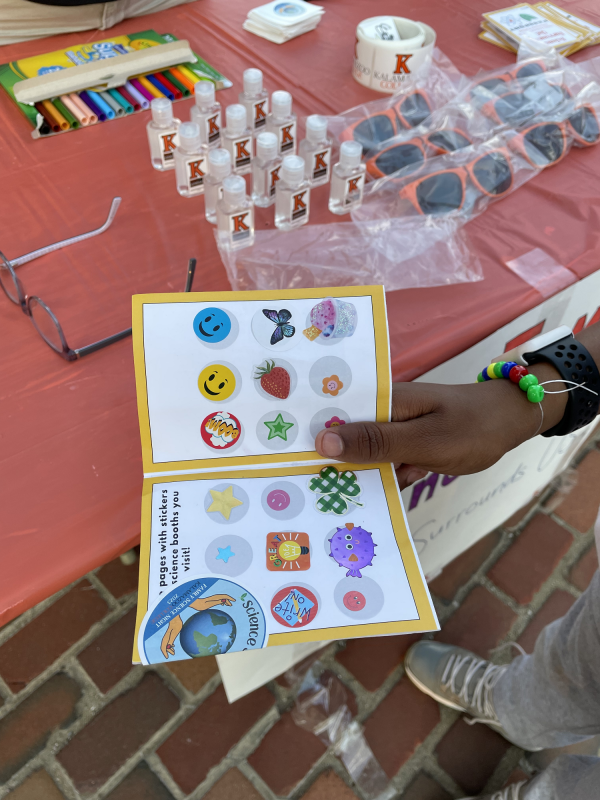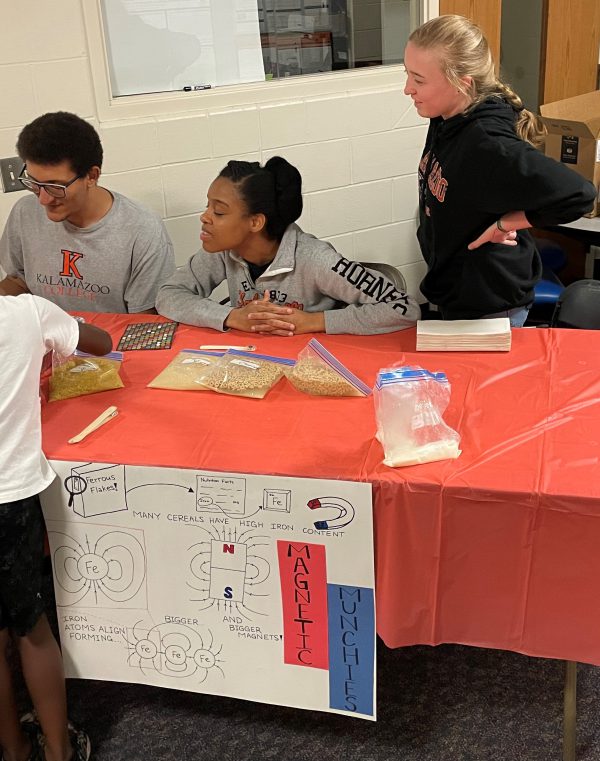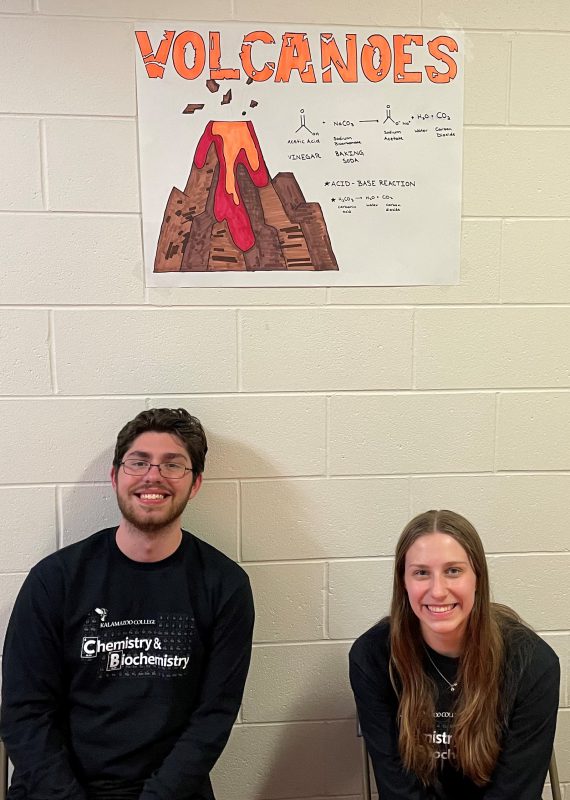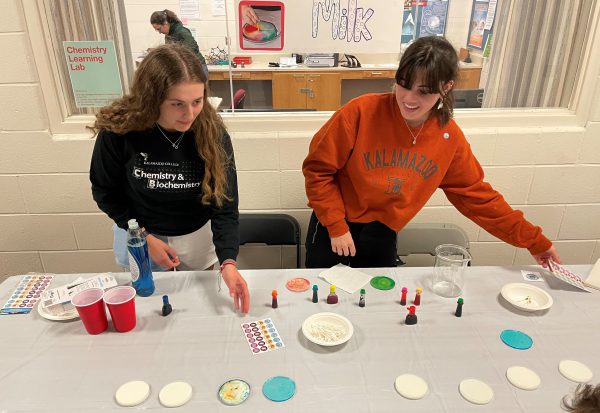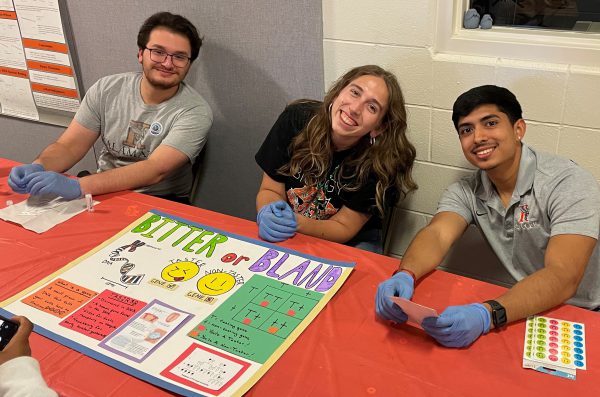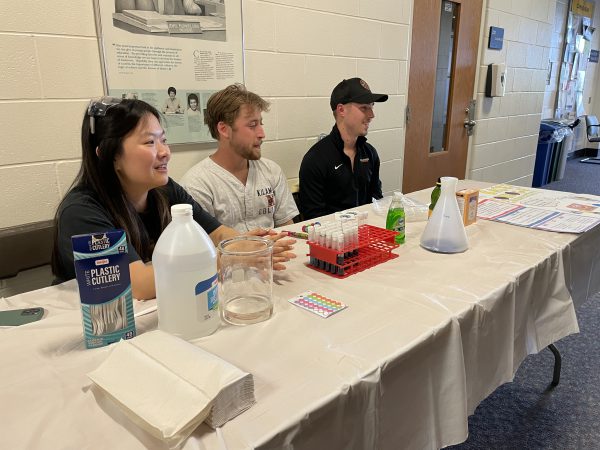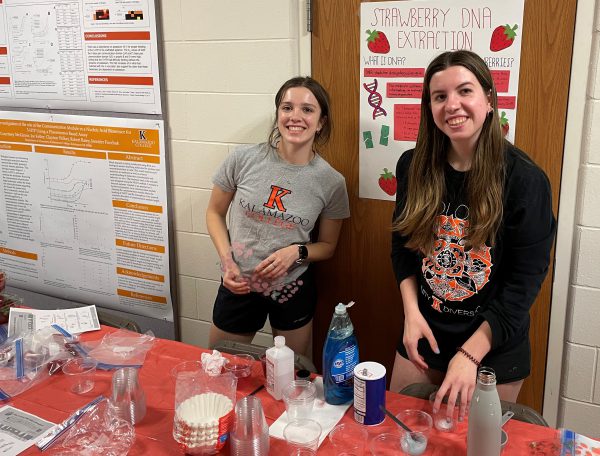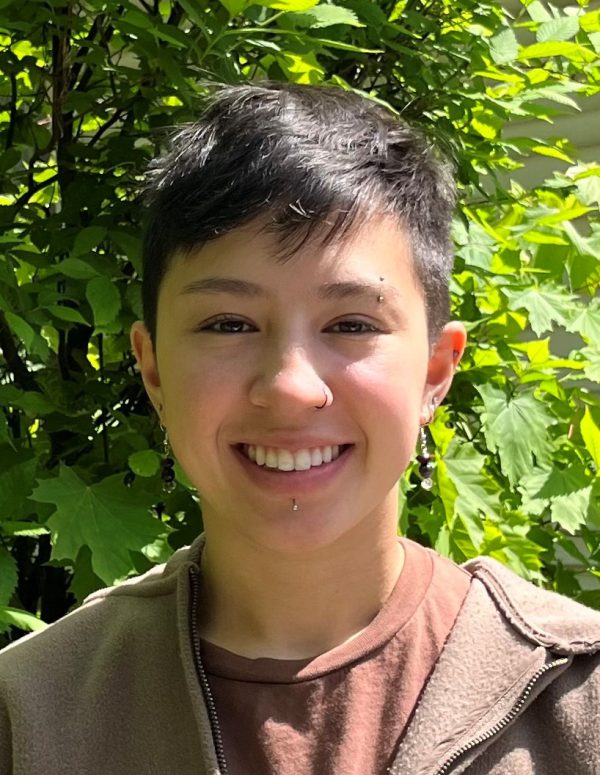
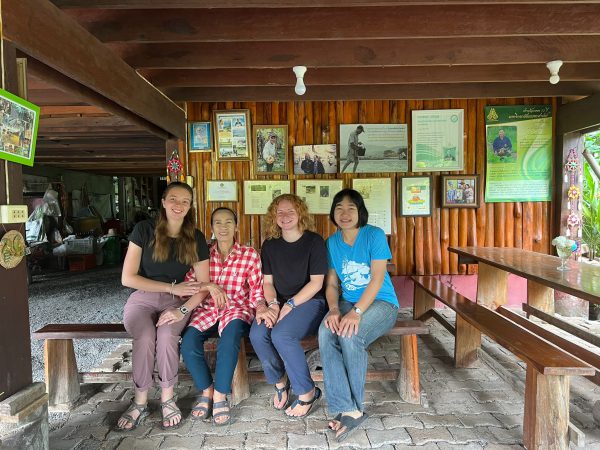

A study-abroad experience, a passion for sustainability and a love for her city have helped a Kalamazoo College Heyl scholar leave her mark on Imagine Kalamazoo 2035, the city’s newly launched master plan.
Emerson Wesselhoff ’25 is an outreach and engagement intern working with City Planner Christina Anderson ’98. She was among the officials at an open house September 19 when the city shared some of its successes from the previous master plan and discussed with residents what they can expect over the next year with the new plan.
Now, as a part of Imagine Kalamazoo 2035, Wesselhoff will lead the city’s first Imagine Kalamazoo Reads effort, a community read along and discussion with clubs, community groups and residents. Together, they will have meaningful conversations about Happy City: Transforming Our Lives Through Urban Design, a book by award-winning journalist Charles Montgomery beginning Monday, September 30. The book combines urban design and an emerging science of happiness that will help participants analyze some of the world’s most dynamic cities, while brainstorming what residents want in Kalamazoo.
“I first read the book at K through a class I took sophomore year,” Wesselhoff said, speaking of a seminar led by Anderson, City of Kalamazoo Chief Operating Officer Laura Lam ’99 and then-Mary Jane Underwood Stryker Center for Civic Engagement Director Alison Geist. “We want Individual citizens, book clubs, organizations, boards, shops and institutions to read it, and every month we will host a community-led discussion of the book. I’ve put together a big toolkit that provides summaries, links to the author’s TED talk, and discussion questions to guide thoughts and processes. We want to get people thinking about how the city makes us happy and what happiness means in our lives.”
Wesselhoff’s opportunity is a relatable follow-up to a reading-focused experience she led when she studied abroad in Thailand last year. She concluded her time overseas with a six-week climate engagement internship through a non-government organization called Kiaow Suay Hom, which translates to Green, Beautiful and Fragrant in English. There, she studied the benefits of green spaces in fighting pollution and particulate matter (PM 2.5) as smoke and smog cause health risks such as heart attacks, cancer and respiratory issues in Thailand. The organization had created a children’s book about PM 2.5 that was central to the outreach Wessselhoff performed as part of her internship.
How to Participate
in the Read Along
- Let Wesselhoff know if you or a group will join the read along and whether you would like resources by emailing her at wesselhoffe@kalamazoocity.org.
- Happy City is available at a discount at Bookbug and This is a Bookstore (3019 Oakland Drive), in person and online. Use the discount code KALAMAZOO if you buy the book online. You may also read an online version of the book or get it from the Kalamazoo Public Library as an eBook or audio book via Hoopla.
- Public read along discussions start Monday, September 30, with a gathering at Bookbug and This is a Bookstore. A second discussion will take place Wednesday, October 23, at Jerico, 1501 Fulford St. Free reservations are available online for the September 30 event and the October 23 event.
- A Happy City toolkit is available online to guide independent reads and discussions.
- Share your read along results by completing a brief online form, sending an email to hello@kalamazoocity.org with your responses typed, or attaching a scan of any written notes to an email. Return a paper copy by mail or in person to Community Planning and Economic Development, 245 N. Rose St. in Kalamazoo, during business hours.



“Having more green space, carbon-sequestering and pollution-filtering plants is a great way to combat PM 2.5,” Wesselhoff said. “Creating those green spaces starts with awareness and I learned the importance of youth education. A huge component of my internship was going around to local elementary schools in In the Mae Hia subdistrict of Chiang Mai, Thailand, and showing how sustainability connects to local culture, children’s lives, and how to keep them and their friends and family safe. I learned how to engage with kids and break down a heavily scientific and scary topic, while connecting it to their culture and their lives at home. It made them feel empowered to make choices that are healthier for their community.”
She hopes Happy City read along conversations will have similar success and spark some ideas regarding potential local sustainability efforts.
“I’m trying to help bring awareness to how the city impacts our sense of happiness and our sense of self in where we live,” she said. “That’s a big piece of environmental engagement work—knowing where you live, knowing its shortcomings, and advocating for the things that make it great, and sustainability planning is a huge part of that. I look at my study abroad experience, which was so centered on putting my assumptions on the back burner and learning from local people through their lived experiences. I’m trying to bring that same practice back here. I think we often turn to academics, politicians or big systems to figure out how to make progress. What I learned from local communities in Thailand is to focus instead on making space for our relationship to land, first and foremost. Community awareness and respect will follow close behind.”
Wesselhoff was abroad for a total of six months, spending her time first with the International Sustainable Development Studies Institute—a hands-on, fieldwork learning center based in Chiang Mai, Thailand, focused on sustainability.
With ISDSI, Wesselhoff and 13 other students from around the world, including two other K students, took one monthlong class at a time with courses including culture, ecology and community; sustainable food systems; political ecology and ocean ecology. The first week of each class consisted of lectures before the students stayed three weeks with host families, mostly in indigenous communities, and performed field or volunteer work in the community.
In the sustainable food systems course, Wesselhoff and her peers spent two weeks living in an organic co-op village called Maetha, staying with a seed saver and learning about organic agriculture. The third week she lived on an organic coffee farm called Nine One Coffee near a jungle and learned about the organic bean-to-cup process.
With the forestry course, Wesselhoff traveled to Mae Hong Son, the northernmost province in Thailand, near the Myanmar border, and backpacked between six villages, starting at low elevation and proceeding higher with each stop. Along the way, she lived with six indigenous host families who graciously taught the students about livelihoods and land rights in their highland communities.
During the ocean ecology course, Wesselhoff and her group went south to learn about mudflats and mangroves while living on a coastal farm, before spending about a week and a half in the Adang archipelago near the Malaysian border to kayak through more trading routes and learn about coral reef ecosystems. When the classes ended, students from other colleges returned home and the K students began working internships. Wesselhoff’s experience now feeds her desire to improve life in Kalamazoo.


At home, the Loy Norrix High School graduate is a biology major with a concentration in environmental studies and minors in English and anthropology-sociology. She also serves K as a Climate Action Plan Committee student representative and intern, advocating for the College’s efforts in being carbon neutral by 2050. The committee maintains the College’s Climate Action Plan in association with the President’s Climate Leadership Commitment, which K joined in 2010, while establishing goals, monitoring progress, conducting annual reporting and providing guidance on projects and initiatives to support the plan. Plus, Wesselhoff writes blog post updates addressing news on climate efforts at K, and all her work excites her to extend her work into the city.
“The more time I spend in Kalamazoo, the more I realize just how much people care about this place,” Wesselhoff said. “I think I’m lucky because I’m not just here as a four-year college student. I have roots here and that gives me a distinct advantage. I’m in a college environment most of the time with the connections I build in the K community, but I also work with folks in the city, getting to talk to stakeholders and community members, going to places like the farmers market or events downtown like Art Hop and Lunchtime Live. Even if people have a complaint to voice, it’s because they care about where they live. The city of Kalamazoo is headed in a unique direction, with bountiful opportunities to make the city a more connected, livable, and sustainable place. I feel very fortunate to be here in a time of my life where I can learn all about those things.”






